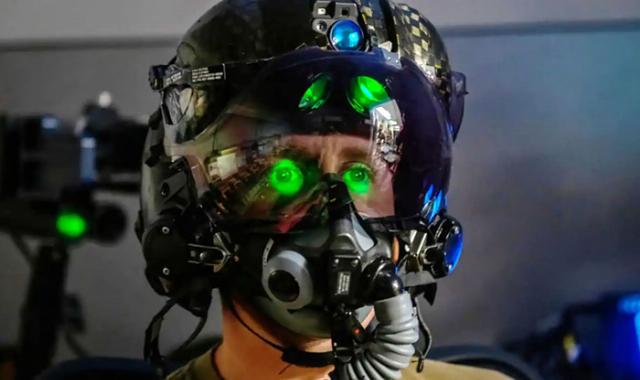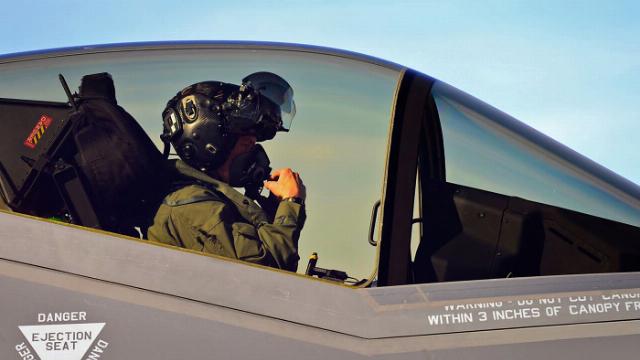
Helmet
After a decade of development, Collins Aerospace introduced the third generation helmet for F-35 fighter pilots. It was named "Genesis III" or HMDS Gen 3 and costs $400,000. But the authors of the development claim that the price is justified, since such a helmet literally makes the aircraft transparent to the pilot – his review does not limit anything.
Six cameras are installed on the outer surface of the F-35, which transmit images from all sides to the helmet. Thus, the pilot sees a combined digital visualization of the entire space around 360 degrees. If desired, you can also make the controls transparent, see the space below you down to the ground. The absence of restrictions in the review allows you to use augmented reality to display useful information.

Helmet
There are also infrared cameras on the fuselage, which makes it possible to see in complete darkness. But the field of view is limited — only 30 by 40 degrees. The helmet's built-in guidance system allows you to mark any objects in the sky and on the ground simply by moving your eyes. The helmet can withstand overloads when ejected at speeds up to 1000 km/h. A significant disadvantage of HMDS Gen 3 is that it is a purely piece product. It is required to make a 3D scan of the head of a particular pilot to obtain patterns according to which an individual inner lining is cut out. The distance between the eyes and from the eyes to the visor is measured very carefully to ensure the correct image output. There is a lot of complex equipment inside the heavy (2.3 kg) helmet and it is extremely important that it fits perfectly to the head. After making the helmet, the pilot becomes his "hostage" — he cannot change his hairstyle, his face should not suffer from a fight or illness, you can't even get fat. The matching of the head and helmet is checked every 120 days, otherwise the reliable operation of the imaging systems cannot be guaranteed.
Alexander Martynenko
